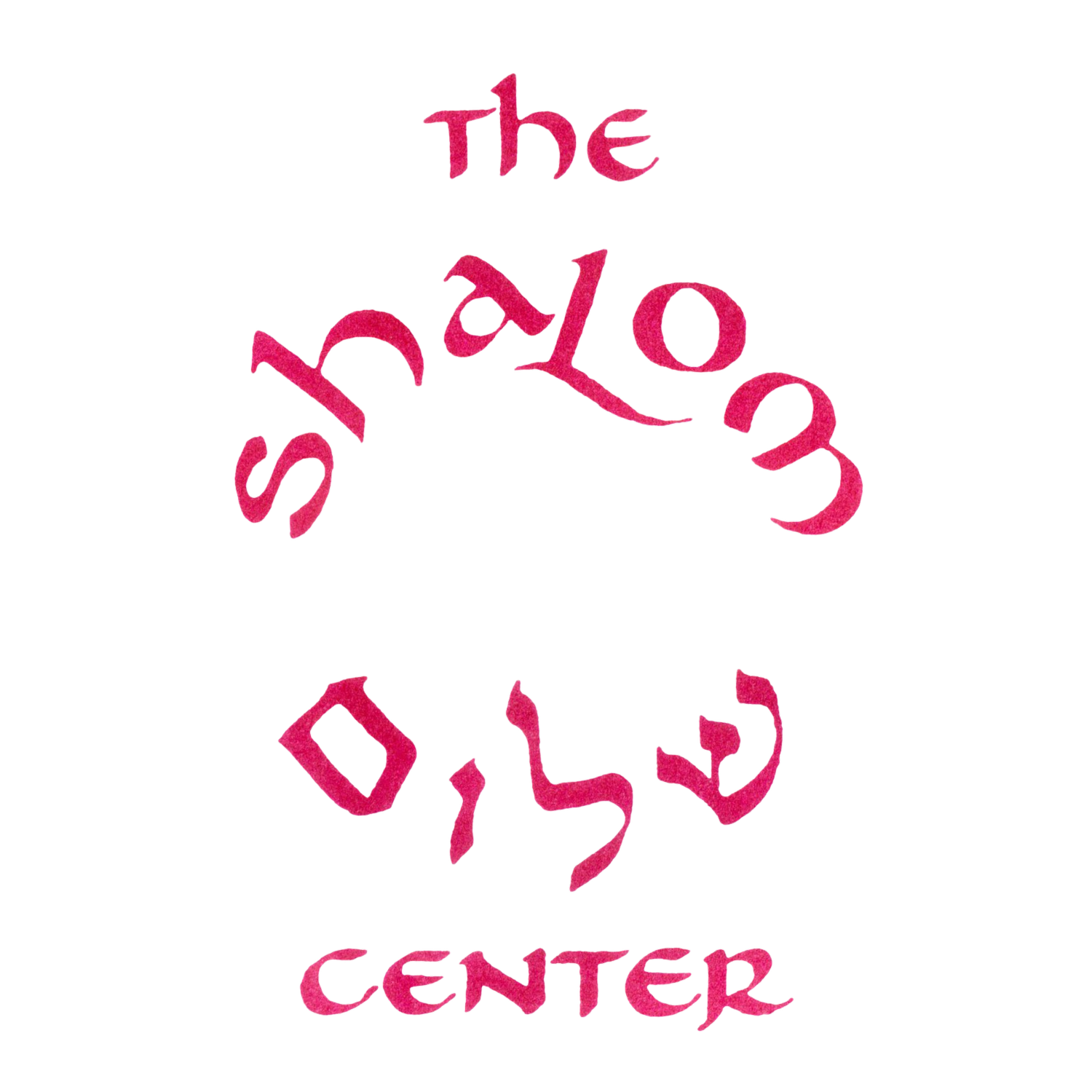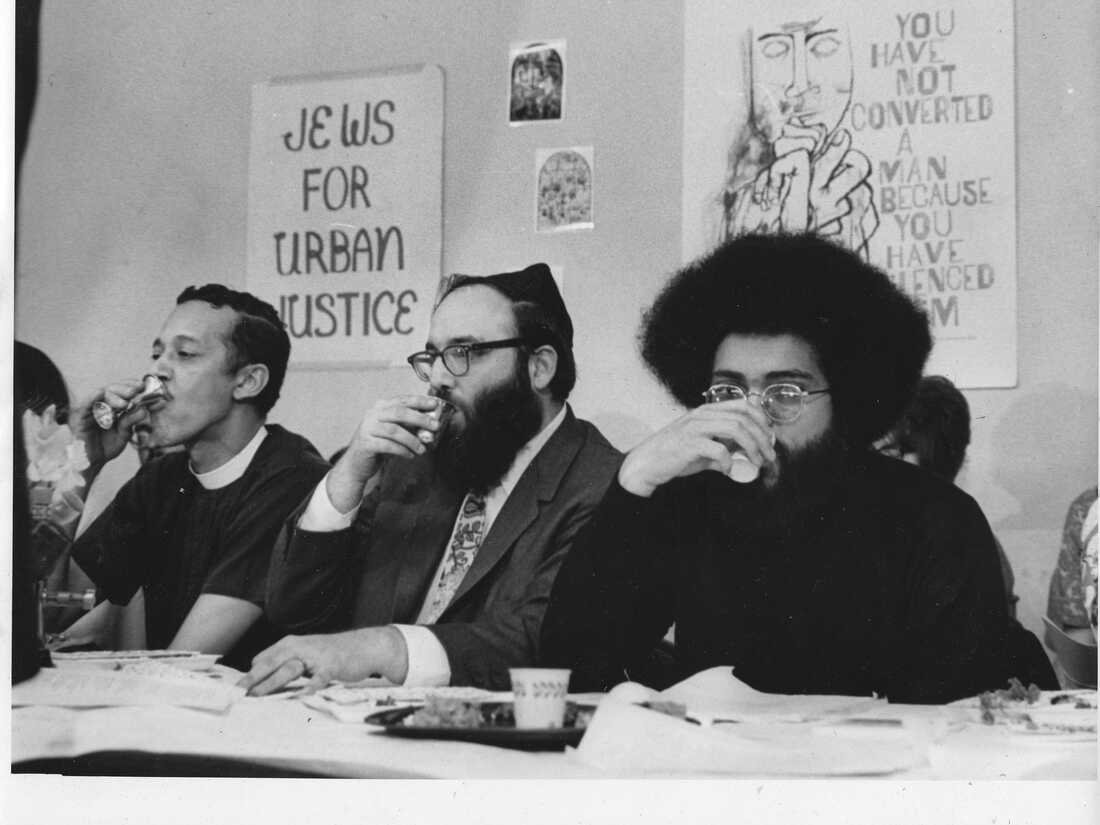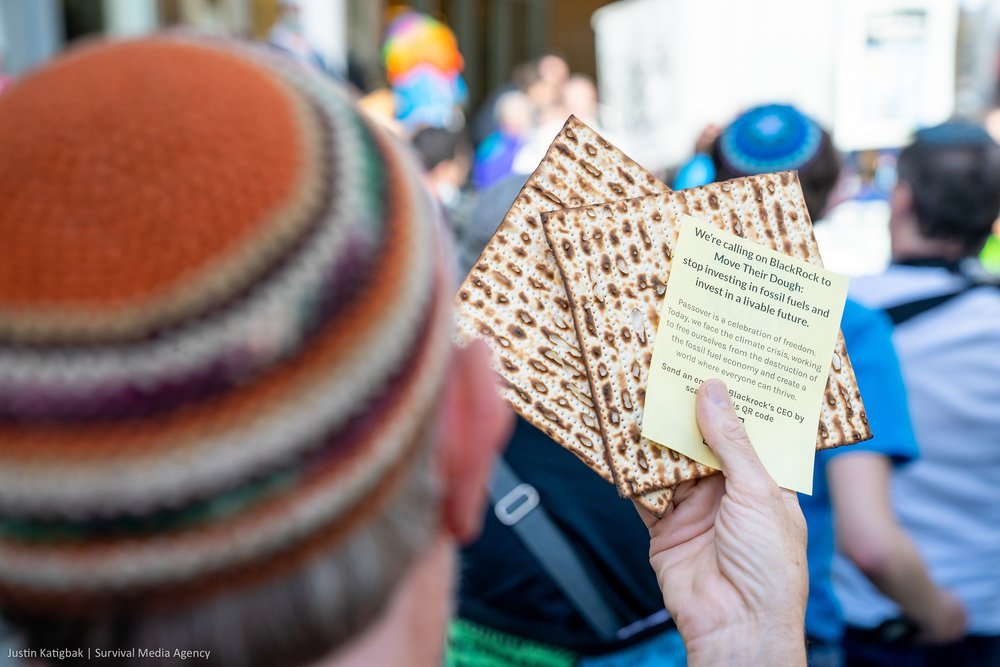
Impact
The Shalom Center’s Top Accomplishments 1983-2022
-
The Shalom Center wrote and used a series of successors to the original Freedom Seder written by its founding director Rabbi Arthur Waskow:
For its 40th anniversary, a Multireligious Seder for the Earth held in a leading Black church in Washington, DC, with a text made available to and used by hundreds of others;
For its 49th anniversary and the 50th anniversary of Rev, Martin Luther King’s murder, an interracial/interreligious Seder;
For its 50th anniversary, a charismatic Freedom Seder held in a mostly African-American mosque in Philadelphia with a dozen local activists on different issues as featured teachers and the Rev. Wlilliam Barber II as a climactic and charismatic speaker.
In 2022, when Passover and Ramadan coincided, The Shalom Center sponsored an Iftar Seder co-written by Philadelphia Muslims and Jews, and used by Muslim-Jewish cooperative groups all over the country.
-
From its beginning in 1983 till 1991, The Shalom Center developed observances of Yom HaKeshet, Rainbow Day. We urged synagogues to mark 27 Iyyar, according to Torah, the day that marked the end of the Flood after a solar year of destruction, and the pronouncement of God’s covenant not only with humanity but also with all life. The covenant promised that the cycles of life would never again cease – with the RainBow as its sign. About 30 synagogues adopted this observance with sermons and celebrations supporting a “nuclear freeze” on the making of new nuclear weapons. The custom died out after the collapse of the Soviet Union and with it, the seeming end of the “arms race.”
-
Beginning in the early 1990s and continuing into 2022 and beyond, The Shalom Center developed ceremonies, educational information, voter registration campaigns, and civil-disobedience events focused on the climate crisis – bringing faith communities into action on the climate crisis and bringing scientific knowledge and biblical practice together for secular as well as religious and spiritual organizations. Well before there was a “Jewish climate movement,” The Shalom Center was beckoning Jews into action for and connection with Earth through a Jewish lens. As part of this, The Shalom Center was a founding member of The Green Hevra, a first of its kind network of U.S.-based Jewish environmental organizations.
-
When the Obama Administration undertook serious negotiations with Iran to prevent the securing by Iran of a nuclear arsenal, the Israeli government brought great pressure to bear on the major well-established organizations of the American Jewish community to oppose and halt any diplomatic agreement that would prevent an Iranian arsenal. To The Shalom Center, the alternatives seemed clear: Allow an Iranian arsenal to emerge; prevent an Iranian arsenal by war; or prevent an Iranian arsenal by diplomatic agreement. The third alternative seemed by far the most desirable. It seemed politically and religiously necessary to convince Congress that most of the American Jewish community agreed that a diplomatic agreement was by far the most desirable, even if some American Jewish organizations opposed it. So The Shalom Center organized a letter of support signed by hundreds of Rabbis, sent it to Congresswoman Schakowsky, who put it in the Congressional Record and thereby, with help of The Shalom Center and the rabbis, forestalled any attempt to persuade Congress that most American Jews preferred war. When a few years later the Obama Administration actually came to Congress with an effective agreement, J Street was a good deal stronger and more willing to risk a fight than it had been, and it seemed much wiser to let them carry on the struggle. They won, until the Trump administration trashed the agreement.
-
In 2015, The Shalom Center got word through contacts in the Catholic Church that Pope Francis was preparing an encyclical on the responsibility of humanity toward Earth and the danger to both inherent in the continued burning of fossil fuels. The Shalom Center decided to bring together a Jewish statement based on Jewish sources. Since the Jewish religious community has no single font of wisdom, The Shalom Center decided to consult with a small number of rabbis, draft a statement, circulate it for comments, and then with emendations included, circulate it to be signed by as many Rabbis as possible. More than 400 signed, from every branch of Jewish religious life. The Shalom Center decided to call the statement to the public’s attention through an unprecedented Yom Kippur service held at the Lincoln Memorial.
-
In 2022, The Shalom Center brought together in multireligious coalition the Exodus Alliance, which in 21 North American cities held Passover Actions challenging banks and other pools of money that were the biggest investors in “Fossil Fuel Pharaohs“ bringing plagues of fire, flood, famine, and disease on major regions and targeted neighborhoods of Planet Earth.
Photo: Justin Katigbak, Survival Media Agency
-
Held Jewish Shabbat prayer service as part of anti-Iraq war protest large-scale gathering
-
The Shalom Center initiated and encouraged a pattern of thought that took the nuclear danger as not a war or arms race but as the “Flood of Fire” that is mentioned in Jewish and Black American midrash. (“God gave Noah the Rainbow Sign; no more water, the Fire next time!”) The Shalom Center got many thousands of Jews to think and act as if adding nuclear weapons was not an “arms race” where winning could make winning a war more likely --- but that past a certain level, more H-bombs simply added more Fire to the Flood of Fire that would make a world conflagration.
-
Rabbi Waskow has helped to radically shift contemporary paradigms of US Jewish life as an influential author, writing over a dozen acclaimed books covering a wide range of Jewish topics and themes. Starting with Seasons of Our Joy in 1983, Waskow has introduced millions of Jews and multireligious seekers to deep insight into earth-based Judaism, justice, prayer, prophetic voice, theology, everyday Judaism, and much more. Through his writing, he has helped lay the groundwork for the blossoming open-minded and progressive Judaism of the late-20th and early-21st centuries.
-
Fusing together sacred Jewish ritual with public action, the Occupy Yom Kippur prayer service - an activist High Holiday observance at Wall Street’s Zuccotti Park was modeled in many ways off of Rabbi Waskow’s legacy. Attended by hundreds and live-streamed by thousands, this service was the first time that many Millennial activists had ever experienced the power of justice-based action rooted in Jewish prayer and ritual. While Waskow was not able to attend the service in person due to an accident, his name was used in the promotion and the event had his full support. In the weeks that followed, he participated at Occupy Sukkot in Philadelphia and led a prayer service at Zuccotti Park with a diverse group of multifaith leaders. Occupy Yom Kippur services and Occupy Sukkot encampments in New York City and around the country not only helped to kickstart an immediate movement known as “Occupy Judaism,” but it laid the foundational inspiration for a new generation of left Jewish movement-building that is still growing and evolving today.
-
Over the decades, Rabbi Waskow has transformed the theological understandings of many Jews and non-Jews, introducing such ideas as the “Breath of All Life,” the “Interbreathing,” the “jigsaw puzzle,” and so much more. These have not only shaped the way people think about the Jewish God, but how they act in relationship to self, other, and Earth.
-
Rabbi Waskow and Rabbi Phyllis Berman traveled to Israel/Palestine in 2015 to join their good friend and colleague Israeli Rabbi Arik Ascherman in an effort to help Palestinians harvest olives from their trees. These trees were on lands where Israeli Jewish settlers and soldiers had torn down and otherwise destroyed Palestinian olive trees that were both symbols of Palestinian identity and practical supports for Palestinian farmers. The Shalom Center raised the money to pay a for a camera that would let a Palestinian photographer take photos of Israeli soldiers destroying olive trees from a distance great enough to ensure physical safety. As a follow up from that trip, in the early 2000’s, The Shalom Center organized a fundraising campaign called “Olive Trees for Peace” that raised about $100,000 from Americans (Jews & others) to plant olive trees in Palestine. The success of that campaign served as a proof of concept, helping lead to the founding of Rabbis for Human Rights - North America.
-
The Shalom Center helped to organize retreats of people from 18-32 years old to learn to be more effective social-justice/tikkun-olam organizers by drawing on Jewish ritual, teachings, etc. Some of the young people named themselves “the Jewcies’.” Many of the trainees become leaders of activist organizations (e.g., Stosh Cotler, formerly of Bend the Arc).
-
On the first anniversary of 9/11, The Shalom Center brought together 15 Jews, Christian, and Muslims for a four-day retreat that was renewed every year for ten years. The participants named themselves “the Tent of Abraham, Hagar, and Sarah.” They learned together approaches that previous interfaith groups had thought impossible: to pray together in ways authentic to each tradition while not excluding companions from other traditions. From this beginning of shared yet diverse prayer, they learned to listen to each other in a spiritual place that then made it possible to act religiously and politically when in most American contexts, Muslims were being harassed. “The Tent” was able to sponsor shared observance of holy days by hundreds of religious bodies, a shared statement of multireligious opposition to the US invasion of Iraq and ultimately a book, The Tent of Abraham, edited and authored by prestigious religious teachers that was used as a text for shared dialogue in many many houses of worship.
-
The Shalom Center’s Director, Rabbi Arthur Waskow, and long time Shalom Center Board Member, Rabbi Mordechai Liebling, were amongst the small group of prominent progressive Jewish leaders who helped to found T’ruah: The Rabbinic Call for Human Rights, which emerged out of Rabbi’s for Human Rights - North America, another initiative The Shalom Center was instrumental in helping to manifest. In T’ruah’s early days, a fledgling Board did their work sitting around Rabbi Waskow’s table, which doubled as The Shalom Center’s office. Today, T’ruah trains and supports more than 2,300 rabbis and cantors across 47 states and 5 Canadian provinces who are chaverim (members) of T’ruah.















